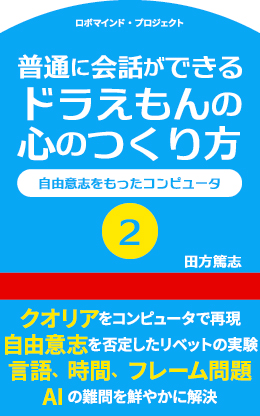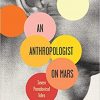
What Does It Mean? : To Identify A Three-Dimensional Space
What Does It Mean? : To Identify A Three-Dimensional Space
From seeing with your eyes, identifying in your brain to understanding the meaning
Space
In the last post “Subjectivity and Objectivity – What is self? What’s Admirable About Being Able to See Yourself Objectively?” I talked about virtual worlds.
The reality which human beings see in their consciousness is in fact a fabricated virtual world made by human mind.
Consciousness doesn’t directly identify the reality; rather it identifies a virtual world.
As these virtual worlds are precisely-simulated three-dimensional spaces, human beings are capable of comprehending their own space.
Hence the concept of a three-dimensional space can only be understood with the existence of virtual worlds which human mind creates.
In short, a three-dimensional space is a fantasy which only exists inside our head rather than in the real world.
Species without consciousness cannot comprehend such concept as a three-dimensional space.
Animals don’t know that they belong in a three-dimensional space and that are incapable of distinguishing themselves from the world.
Let me explain this in a bit detail.
Let’s say there is a dog on the riverbank.
Across the river, there lies a huge chunk of meat. The dog wants to eat it but can’t cross the river; instead it keeps barking.
However, when you look closely, there is a bridge over the river further down the river.
So if the dog crosses the bridge, it can get the meat over there.
The dog, even with the knowledge of the bridge, continues barking at the meat.
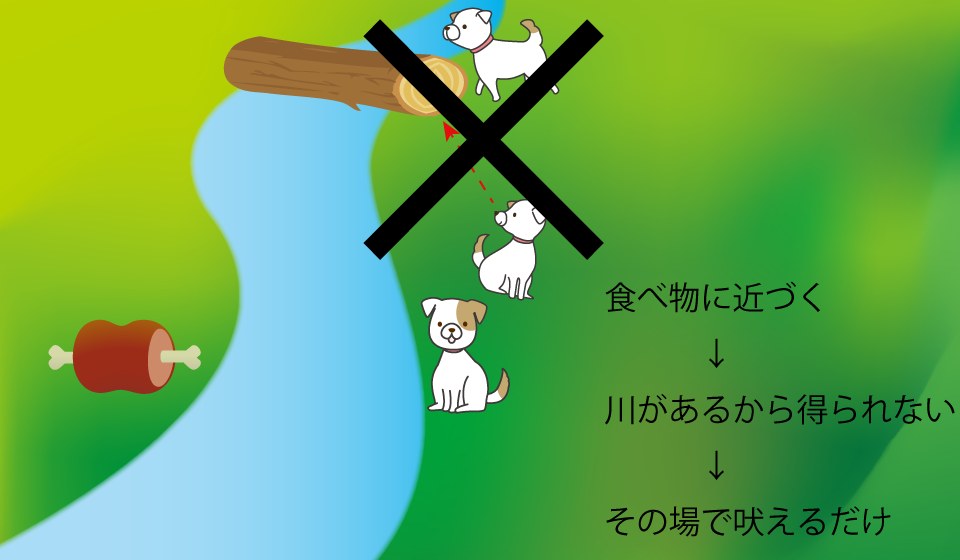
This situation happens frequently If you have a dog.
If only it walks a little further down, it can reach it; but it doesn’t.
You can easily understand it if you think about the difference between animal mind and human mind.
Dogs, if they find food, have this action pattern to go closer to it.
That’s why if there is any obstacle between the two, it freezes.
Even if it sees the bridge over the river, because it only has one action pattern to get closer to the food, it cannot act beyond – such as to walk further down from the food and cross the bridge.
All it does is to keep barking, because the dog is not satisfied.
On the other hand, in the case of humans, our consciousness interprets the real world as a three-dimensional virtual space.
If there is food across the river and we see a bridge a bit far away from us, we will know that to take the food by taking a detour.
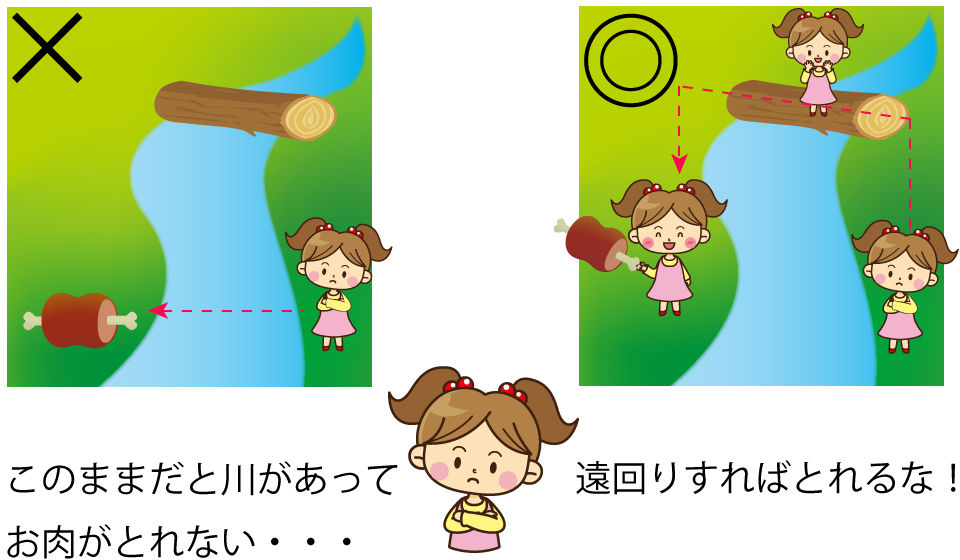
Now let’s break it down furthermore in depth.
Humans can see the scenery that they are watching from above, a bird-eye perspective.
We can look at the location of self, river, food and bridge as a whole and draw a route inside our head, that we can’t cross the river straight but we can take a detour, cross the bridge and get the food.
To see the scenery from above is only possible as we reconstruct the world as a virtual world in our head.
We can freely manipulate our elf-made virtual worlds.
We can’t do that with the real world.
Dogs, with food in front of their nose, have only one pattern of action to go straight to the food.
This is how I mean by self being part of the world as I have explained in “Subjectivity and Objectivity”.
The sense that you are included in the real world.
Once they see food, they can’t but to take already-designated action and they have no means to change that action.
To see the scenery objectively is only possible as we reconstruct the world as a virtual world in our head.
Maneuvering Space
When we draw a route in our head, we don’t simply draw it inside a reconstructed reality, a virtual world.
If we did that in a virtual world, consciousness would believe that the route is drawn on the reality.
So, when thinking in our head, we construct another world in our head from a virtual world and we maneuver it.
We call it a maneuvering space.
Consciousness moves something to focus on in to a maneuvering space and it manipulates it inside the maneuvering space.
We call things inside the maneuvering space an object.
Maybe you haven’t heard of this term before, but this is borrowed from the computing language, object orientation language.
An object has data of that thing in some elements. For instance, the object of an apple has elements such as “red” and “round”.
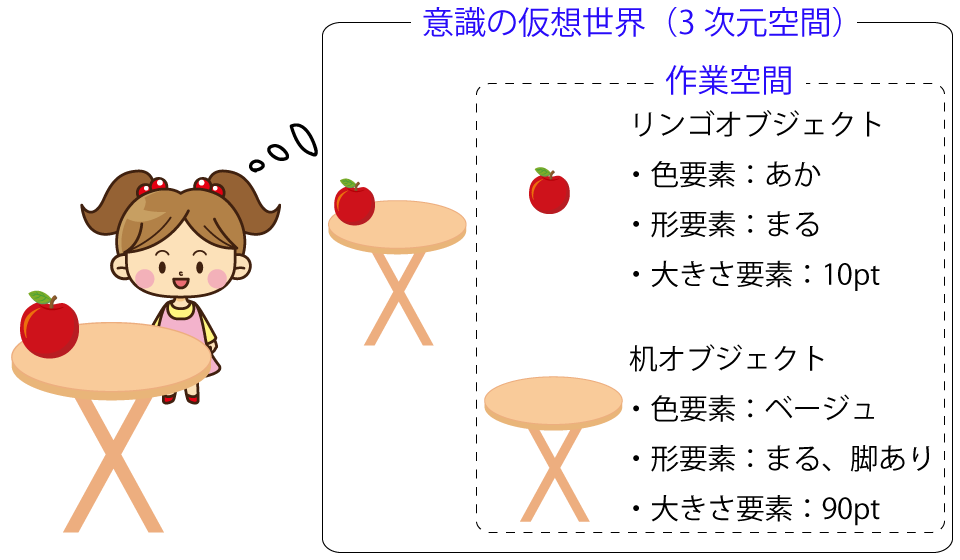
In addition, an object can formulate a parent-child relationship. You can assign the relationship as the parent of apple is fruits, and that of fruits is food.
Reference: A Conceptual Tree from “How to Define the Meaning of Word”
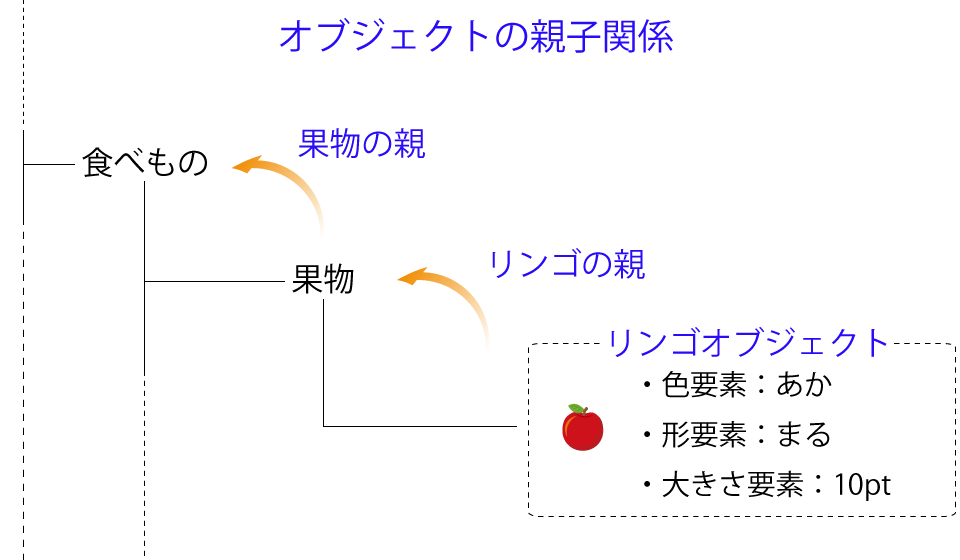
Now let’s explore more about maneuvering space.
When there are two apples in front of us, we can compare which one is bigger.
To explain this using the concept maneuvering space, consciousness allocates two objects of the apples into a maneuvering space.
Among the elements which the objects have, we can compare which one is bigger when we take out the size element.
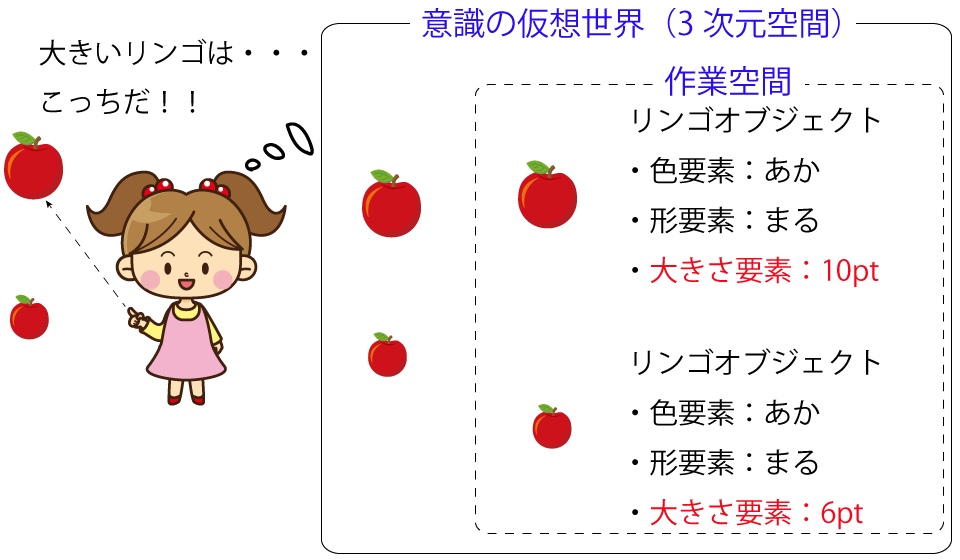
This is how we maneuver inside our head using elements of object.
This is what thinking is about.
To think diversely in our head, this is what our consciousness is capable of.
AI which can think as humans do.
This is what we call artificial general intelligence (AGI).
The key of AGI lies in the consciousness model.

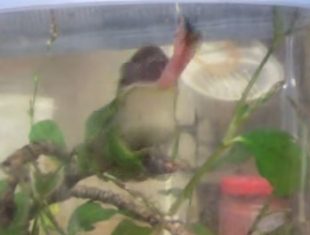 What Is consciousness In The First Place? Can We Invent Artificial Consciousness Using AI?
What Is consciousness In The First Place? Can We Invent Artificial Consciousness Using AI?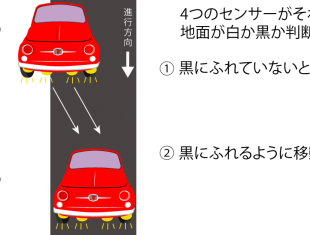
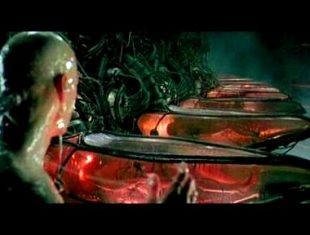 Hypothesis: consciousness’ virtual world
Hypothesis: consciousness’ virtual world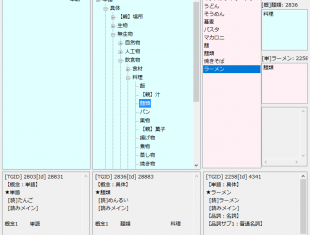 How to Define the Meaning of Words
How to Define the Meaning of Words
